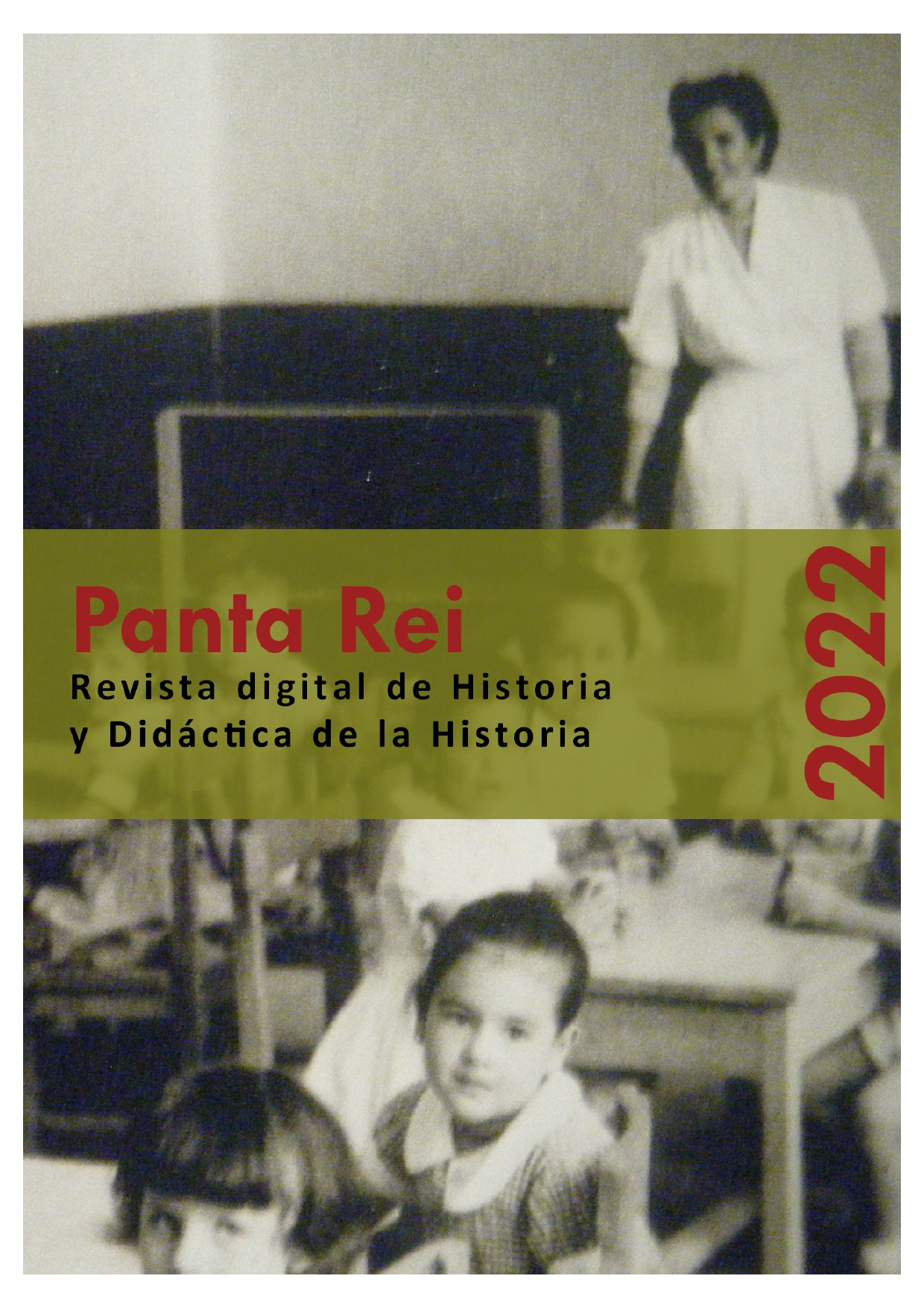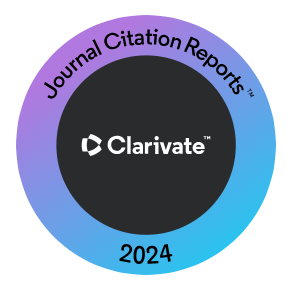Algunas notas sobre la distribución de bienes en los cultos funerarios egipcios: tres casos de estudio
Resumen
Las disposiciones funerarias de los propietarios de tumbas del Reino Antiguo constituyen una evidencia fundamental para la comprensión de los sistemas de funcionamiento del culto funerario de los particulares. Las cláusulas presentes en esos textos nos proporcionan información sobre el desarrollo del culto y el uso de las propiedades destinadas a su mantenimiento. Pese a ello, hay algunos aspectos sobre los que no se da demasiada información. Una de dichas facetas es el modo en el que los bienes destinados al culto funerario son distribuidos entre los oficiantes. En este artículo pretendemos contribuir a clarificar este aspecto analizando tres casos de estudio que son particularmente relevantes.
Descargas
-
Resumen953
-
PDF 582
-
EPUB 414
Citas
Baer, K. (1956). A note on Egyptian units of area in the Old Kingdom. Journal of Near Eastern Studies 15, 113-117.
Barta, M., (2013). Kings, Viziers, and Courtiers: Executive Power in the Third Millennium B.C. In J. C. Moreno García (ed.), Ancient Egyptian Administration (pp. 153-175). Brill.
Breasted, J. H. (1962). Ancient Records: historical documents, from the earliest times to the persian conquest. Russell & Russell.
Brovarski, E. J. (2001). The Senedjemib Complex. Part 1, The mastabas of Senedjemib Inti (G2370), Khnumenti (G2374), and Senedjemib Mehi (G2378). Museum of Fine Arts, Boston.
Der Manuelian, P. (1986). An essay in document transmision: Nj-kA-anx and the earliest xrjw-rnpt, Journal of Near Eastern Studies 45, 1-18.
Der Manuelian, P. (2009). Penmeru Revisited-Giza Mastaba G 2197 (Giza Archives Gleanings V). Journal of the American Research Center in Egypt 45, 3-48.
Edel, E. (1981). Hieroglyphische Inschriften des Alten Reiches. Westdeutscher Verlag.
Edel, E., Seyfried K. J. and Vieler G. (2008). Die Felsgräbernekropole der Qubbet el-Hawa bei Assuan. F. Schöningh.
Fischer, H. G. (1996). Varia nova. Metropolitan Museum of Art New York.
Fitzenreiter, M. (2004). Zum Toteneigentum im Alten Reich. Achet.
Goedicke, H. (1967). Königliche Dokumente aus dem alten Reich, Harrassowitz.
Goedicke, H. (1970). Die privaten Rechtsinschriften aus dem Alten Reich, Verlag Notring.
Hamilton, C. R. (2015). Aspects of the judiciary in the Egyptian Old Kingdom. In J. Cox, C. R. Hamilton, K. R. L. McLardy, A. J. Pettman and D. Stewart (eds.), Ancient Cultures at Monash University, Proceedings of a Conference held between 18-20 October 2013 on Approaches to Studying the Ancient Past (pp. 29-38). British Archaeological Reports.
Harari, I. (1950). Contribution à l'étude de la procedure judiciaire dans l'Ancien Empire égyptien. Imprimerie du Scribe égyptien.
Harari, I. (1957). La fondation cultuelle de N.k.wi.ankh à Tehneh. Notes sur l'organisation cultuelle dans l'Ancien Empire Egyptien. Annales du Service des Antiquités de l'Égypte 54, 317-344.
Hays, H. M. (2000). wD: the context of command in the Old Kingdom, Göttinger Miszellen 176, 63-67.
Helck, W. (1974). Altägyptische Aktenkunde des 3. und 2. Jahrtausends v. Chr. Deutscher Kunstverlag.
Jones, D. (2000). An index of ancient Egyptian titles, epithets and phrases of the Old Kingdom. British Archaeological Reports.
Legros, R. (2018). Décrets de la nécropole royale de Pépy Ier. In K. O. Kuraszkiewicz, E. Kopp and D. Takács (eds.), "The perfection that endures…": studies on Old Kingdom art and archaeology (pp. 279-304). Department of Egyptology, Faculty of Oriental Studies University of Warsaw.
Lippert, S. L. (2008). Einführung in die altägyptische Rechtsgeschichte. Lit.
Lloyd, A. B., Spencer, A. J. and el-Khouli, A. (2008). Saqqâra Tombs 3, The Mastaba of Neferseshemptah. Egypt Exploration Society.
Logan, T. (2000). The Jmyt-pr Document: Form, Function, and Significance. Journal of the American Research Center in Egypt 37, 49-73.
Martin-Pardey, E. (1994). Richten im Alten Reich und die sr-Beamten. In B. M. Byran and D. Lorton (eds.), Essays in Egyptology in honor of Hans Goedicke (pp. 164-165). Van Siclen Books.
Moreno García, J. C. (2004). Egipto en el Imperio Antiguo [2650-2150 antes de Cristo]. Bellaterra.
Moret, A. (1907). Donations et fondations en droit égyptien. Recueil de traveaux relatifs à la philologie et à l'archéologie égyptiennes et assyriennes 29, 57-95.
Moret, A. (1914). Une nouvelle disposition testamentaire de l'ancien Empire égyptien. Comptes rendus de l'Académie des Inscriptions et Belles-lettres, 58 (6), 538-546.
Moussa A. and Altenmuller, H. (1977). Das Grab des Nianchchnum und Chnumhotep, Old Kingdom tombs at the Causeway of King Unas at Saqqara. Verlag Phillip von Zabern.
Mrsich, T. (1968). Untersuchungen zur Hausurkunde des Alten Reiches: Ein Beitrag zum altägyptischen Stiftungsrecht. B. Hessling.
Pirenne, J. (1934). Histoire des institutions et du droit privé de l'Ancienne Égypte, T. 2. La Ve dynastie (2750-2625). Édition de la Fondation égyptologique reine Élisabeth.
Perepelkin, J. J. (1986). Privateigentum in der Vorstellung der Ägypter des alten Reichs. R. Müller-Wollermann.
Philip-Stéphan, A. (2008). Dire le droit en Égypte pharaonique: contribution à l'étude des structures et mécanismes juridictionnels jusqu'au Nouvel Empire. Éditions Safran.
Posener-Kriéger, P. (1976). Les archives du temple funéraire de Néferirkarê-Kakaï (Les papyrus d'Abousir): traduction et commentaire. Institut français d'archéologie orientale du Caire.
Posener-Kriéger, P., Verner M. and Vymazalová H. (2006). The pyramid complex of Raneferef: the papyrus archive. Czech Institute of Egyptology, Faculty of Arts, Charles University in Prague.
Roth, A. M. (1991). Egyptian phyles in the Old Kingdom: the evolution of a system of social organization. Oriental Institute of the University of Chicago.
Sánchez Casado, R. (2017). El servidor del ka y los procedimientos legales del Reino Antiguo. Polis, 29, 101-116.
Sánchez Casado, R. (2018). Changes and developments in the title Hm-kAfrom the Old to the Middle Kingdom. In A. Kahlbacher and E.Priglinger (eds), Tradition and transformation in ancient Egypt: proceedings of the Fifth International Congress for Young Egyptologists, 15-19 September, 2015, Vienna, (pp. 137-145). Austrian Academy of Sciences.
Sánchez Casado, R. (2020). El servidor del ka en el Reino Antiguo: funciones y espacios de actuación. British Archaeological Reports.
Seidl, E. (1951). Einführung in die ägyptische Rechtsgeschichte bis zum Ende des neuen Reiches. J.J. Augustin.
Sethe, K. (1933). Urkunden des Alten Reichs I. J.C. Hinrichs.
Seyfried, K. J. (2013). Dienstpflicht mit Selbstversorgung: Die Diener des Verstorbenen im Alten Reich. In: H. Guksch, E. Hofmann and M. Bommas (eds.), Grab und Totenkult im Alten Ägypten (pp. 41-59). Beck.
Spalinger, J. (1985). A Redistributive Pattern at Assiut. Journal of the American Oriental Society 105 (1), 7-20.
Stracmans, M. (1955). Textes des actes de fondation de l'Ancien Empire, Revue Internationale des Droits de l'Antiquité 2, 31-38.
Strudwick, N. (2005). Texts from the Pyramid Age. Society of Biblical Literature.
Theodorides, A. (1995). Vivre de Maât: travaux sur le droit égyptien ancien. Société Belge d'Études Orientales.
Theodorides, A. (1977). La propriété et ses démembrements en droit pharaonique. Revue Internationale des Droits de l'Antiquité 24, 21-64.
Theodorides, A. (1971). Les contrats d'Hâpidjefa. Revue Internationale des Droits de l'Antiquité 18, 109-251.
Thompson, E. (2014). The Old Kingdom Cemetery at Tehna, Volume I. The Tombs of Nykaiankh I, Nikaiankh II and Kaihep. Aris and Phillips.
Vernus, P. (2013). The Royal Command (wd̠-nsw): A Basic Deed of Executive Power. In: J. C. Moreno García (ed.), Ancient Egyptian Administration (pp. 259-340). Brill.
Yoyotte, J. (1953). Un corps de pólice de l’Egypte Pharaonique. Revue d'Égyptologie 9, 139-151
Derechos de autor 2022 Raúl Sánchez Casado

Esta obra está bajo una licencia internacional Creative Commons Atribución-CompartirIgual 4.0.
Todos los contenidos publicados en nuestra revista están sujetos a una licencia Atribución 4.0 Internacional (CC BY-SA 4.0) de Creative Commons. Usted es libre de compartir (copiar y redistribuir el material en cualquier medio o formato) y adaptar (remezclar, transformar y crear a partir del material para cualquier finalidad, incluso comercial), bajo los siguientes términos:
Reconocimiento: Debe reconocer adecuadamente la autoría, proporcionar un enlace a la licencia e indicar si se han realizado cambios. Puede hacerlo de cualquier manera razonable, pero no de una manera que sugiera que tiene el apoyo del licenciador o lo recibe por el uso que hace.
CompartirIgual: Si remezcla, transforma o crea a partir del material, deberá difundir sus contribuciones bajo la misma licencia que el original.
El texto completo de la licencia se puede consultar en: Licencia Creative Commons













